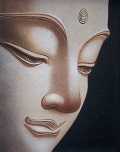- This topic has 5 replies, 2 voices, and was last updated 5 months ago by
Zapper.
-
AuthorPosts
-
-
July 8, 2025 at 2:17 pm #54549
Zapper
ParticipantHello people.
So I saw this:
Katamaṃ ca, bhikkhave, dukkhaṃ? Yaṃ kho, bhikkhave, kāyikaṃ dukkhaṃ kāyikaṃ asātaṃ kāyasamphassajaṃ dukkhaṃ asātaṃ vedayitaṃ, idaṃ vuccati, bhikkhave, dukkhaṃ.
Katamaṃ ca, bhikkhave, domanassaṃ? Yaṃ kho, bhikkhave, cetasikaṃ dukkhaṃ cetasikaṃ asātaṃ manosamphassajaṃ dukkhaṃ asātaṃ vedayitaṃ, idaṃ vuccati, bhikkhave, domanassaṃ.
So, judging by those verses, to me, it seems like there are 3 options.
- Vedanās are bodily reactions to bodily contacts and mental contacts
- Vedanās are mental reactions to bodily contacts and mental contacts
- Vedanās are bodily reactions to bodily contacts and mental reaction to mental contacts
I would love if someone could tell me which one is it, or if it’s something else.
-
July 8, 2025 at 2:40 pm #54551
Zapper
ParticipantAlso, I forgot to make my point clear.
By bodily reactions, I mean, for example, if someone sees an agreeable visual form, the physical body (Kāya) reacts to it. -
July 8, 2025 at 3:50 pm #54552
Lal
KeymasterZapper wrote: “Also, I forgot to make my point clear.
By bodily reactions, I mean, for example, if someone sees an agreeable visual form, the physical body (Kāya) reacts to it.”________
I am glad that you did. It is essential to settle that first.
- That is incorrect. “kāyika dukkha” means dukkha vedana associated with bodily injuries, sicknesses, etc. It is a vedana felt by the physical body. It is experienced via the nervous system in the physical body.
-
July 8, 2025 at 4:53 pm #54556
Lal
KeymasterYes. All other vedanas are mental. But there are two types of “mental vedanā.”
- We experience five types of sensory experiences via the physical body (let us ignore the sensory inputs that come directly to the mind via dhammā). They are sights, sounds, smells, tastes, and body touches.
- That last category is “kāyika vedanā.” The other four (sights, sounds, smells, tastes) do not generate vedanā via the nervous system. Yet we experience joy with them too, and strictly speaking, those are due to sanna (that is what I call “distorted sanna“). They are called “cetasika vedanā“. Both kāyika vedanā and cetasika vedanā also arise in Arahants.
- Now, all those vedanā arise automatically. As I mentioned, Arahants also experience them.
- In response to them, we generate samphassa-jā-vedanā (additional mind-made vedanā) and continue to attach to them as we enjoy the sensory experience. They can be due to kāyika vedanā or cetasika vedanā. Those are the vedanā you referred to in your first post as kāyasamphassajaṃ and manosamphassajaṃ.
- Now, Arahants do not generate the second type of samphassa-jā-vedanā. To generate those, one must attach to the first type of vedanā with ignorance. Arahants fully understand that kāyika vedanā will be there until death, i.e., until their physical bodies die. They also understand that cetasika vedanā are due to “distorted sanna.”
- See “Vedanā (Feelings) Arise in Two Ways.” This is an old post, but I hope it will still be helpful.
1 user thanked author for this post.
-
July 8, 2025 at 5:01 pm #54557
Zapper
ParticipantThank you Lal, that is good information to know.
-
-
AuthorPosts
- You must be logged in to reply to this topic.
